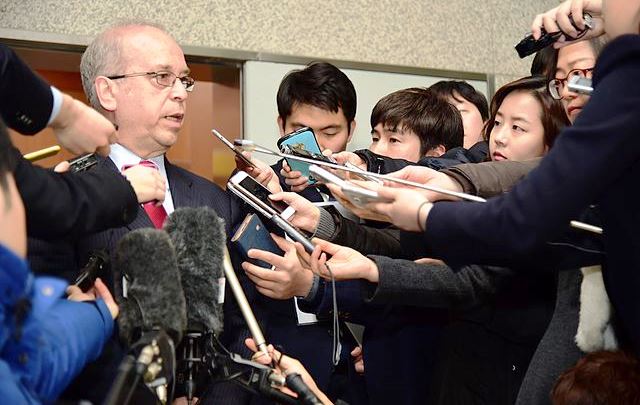
Image source: Wikimedia Commons
News outlets rush to report product recalls, business wrong-doing, accidents and other corporate controversies. Public attention spikes and news reports of the controversy rise to the top of Google News. Then media and public interest wanes, sometimes just as quickly as it rose. Most people at least vaguely remember scandals such as the BP oil well explosion or Wells Fargo fake accounts scandal. Few can recall how the companies responded and fewer know if or how they were resolved.
That’s because communications crises typically follow what’s called the “scandal attention cycle.”
An Initial Spike in Interest
“There’s a surge in initial interest as reporters rush to embrace the scandal narrative, but the press quickly loses interest after the most sensational charges are not substantiated,” writes Brendan Nyhan, an assistant professor of government at Dartmouth College, in Columbia Journalism Review. It often takes time for all the facts and nuanced details to emerge.
According to a study from ING about the impact of social media on news, almost half of the journalists surveyed said they try to publish as quickly as possible and then correct the information later if necessary. That means news outlets sometimes publish articles that were not completely researched before public relations teams can correct the information. Half of the journalists surveyed stated that social media is their main source of information, even though one-third said social media is not a reliable source of information.
The drop in interest, perhaps ironically, poses a challenge for crisis management teams trying to publicize the organization’s efforts to resolve the issue. Research shows that publishers typically give less attention to the more complicated picture after the facts are revealed. They also usually provide less prominent coverage, in particular less front page coverage.
How to Sway Public Opinion
“Even if your public relations team manages to correct all instances of false information published about your brand, public opinion may have already been altered and the public is most likely not interested in reading the corrected and less scandalous information about you,” explains Lauren Latsky at Reputation Management.
To make matters worse, negative news articles can more easily reach the first page of Google the day they’re published if an organization normally has strong search engine results, Latsky points out. In addition, it’s more likely to remain near the top of news results.
Latsky recommends focusing on promoting positive news about the organization to shift media attention sway public opinion.
Focus on Stakeholders
Rather than trying to reach the media or the general public, concentrate on key stakeholders, such as employees, analysts, shareholders, customers, partners and regulators, advises Ed Cafasso, a managing director at Burson-Marsteller.
“In-house and agency communications professionals should know these segments best: You can measure their perceptions, and you have more channels than ever to use to engage with them on the issues that matter most,” Cafasso writes in the PRSA’s Public Relations Strategist.
Having well-established owned media channels on Twitter and Facebook, especially, can be very helpful in combatting negative publicity.
Ongoing media monitoring and measurement can help organizations determine how those stakeholders perceive the brand, how their perceptions are changing, and if PR strategies are succeeding.
The Importance of Measurement
“With measurement you can be the best-informed person in the room,” states Katie Paine, CEO of Paine Publishing, in The Measurement Advisor. “You’ll confidently enter the war room, armed with facts and figures about what worked in the past, what is working now, and what should be changed going forward.”
Here are some things to monitor or measure in a crisis management situation that you ordinarily may not monitor.
Sentiment. Changes in sentiment over time. Automated sentiment analysis of media mentions social media comments can grade the overall sentiment of large numbers of social media comments. Human analysts can assess context and depth of negative or positive sentiment.
Industry terms. Monitoring competitors’ brands and keywords describing your industry niche can help you better understand changes in overall market sentiment.
Influencers. Social media listening can identify and rank influencers to help PR prioritize its responses as well as report what influencers are saying about brands.
News shares. Organizations typically monitor media for mentions of their brand, but it’s also important to track how much social media users share news about the brand. That’s essential now that many people get their news though social media.
Bottom Line: The short-lived scandal attention cycle presents challenges for PR crisis management. Publicizing the organization’s response becomes difficult after initial news of the scandal fades and the media loses interest. PR can publicize the brand’s positive message by reaching important stakeholders through owned media and gauge its progress through media monitoring and measurement.
William J. Comcowich founded and served as CEO of CyberAlert LLC, the predecessor of Glean.info. He is currently serving as Interim CEO and member of the Board of Directors. Glean.info provides customized media monitoring, media measurement and analytics solutions across all types of traditional and social media.




